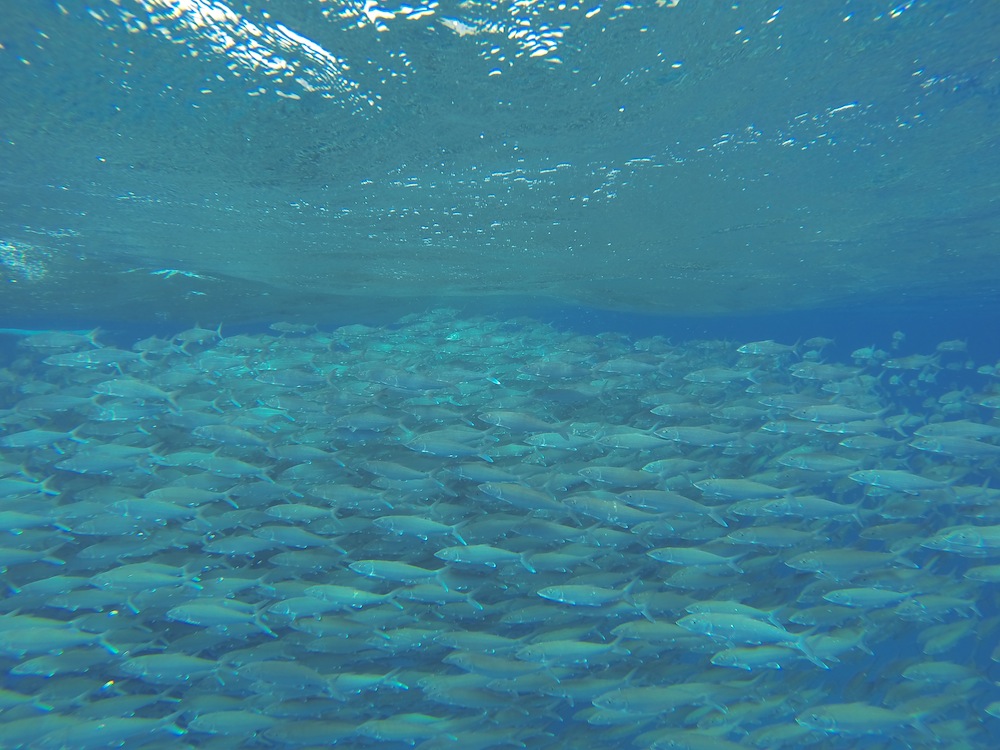Stunning 10,000-Fish Vortex Caught on Video

A tornado of fish 10,000 strong spins in shallow water in the Bahamas. Occasionally, flashes of silver break from the pack as fish shoot to the surface, gulping air and slicing back through the water.
This is the pre-spawning behavior of the bonefish (Albula vulpes), a popular quarry for anglers off the coast of Florida and in the Bahamas. Researchers presented their observations of this secretive behavior — with amazing video — to the Bahamas Ministry of the Environment and conservation collaborators' Bahamas National Trust and The Nature Conservancy this week.
The bonefish is worth hundreds of millions of dollars a year to the recreational fishing industry, but it is threatened due to loss of habitat and overfishing by net-trawling methods.
Fish ecologist Andy Danylchuk, of the University of Massachusetts Amherst, and Aaron Adams, director of operations for Bonefish & Tarpon Trust at the Florida Institute of Technology, tracked 10,000 bonefish in their final stages of spawning using tracking tags inserted into some members of the school.
The fish normally hang out near the sea bottom of shallow offshore waters, perhaps 30 feet (10 meters) down. But right before spawning, in mid-afternoon, the school rose into a silver spiral, and fish occasionally broke the surface, an unusual behavior for bonefish. [See Video of the Strange Fish Tornado]
As night fell and the moon rose, the fish started to move from the shallows to the reef edge, where the seafloor drops off suddenly. As Danylchuk and Adams watched, the fish descended 160 feet (50 m) and hovered about a quarter-mile (0.4 kilometers) from the drop-off, suspended over thousands of feet of dark water.
After waiting in place for about an hour, the school suddenly rushed to the surface, where they released eggs and sperm into the water. The fish then broke for shallow water again, leaving behind millions of fertilized eggs drifting on the ocean currents.
Get the world’s most fascinating discoveries delivered straight to your inbox.
"This new understanding of bonefish movement and spawning aggregations has significant implications for their conservation," Danylchuk said in a statement. Previous conservation attempts had focused on the typical shallow-water bonefish habitat. But fish migrate long distances to form huge spawning schools, and they spend this crucial time in deep waters, according to both the new observations and a study by the same scientists of the fish spawning in 2011. The findings, the researchers say, point to the need to consider both deep and shallow habitats in conservation plans.
Follow Stephanie Pappas on Twitter and Google+. Follow us @livescience, Facebook & Google+. Original article on LiveScience.

Stephanie Pappas is a contributing writer for Live Science, covering topics ranging from geoscience to archaeology to the human brain and behavior. She was previously a senior writer for Live Science but is now a freelancer based in Denver, Colorado, and regularly contributes to Scientific American and The Monitor, the monthly magazine of the American Psychological Association. Stephanie received a bachelor's degree in psychology from the University of South Carolina and a graduate certificate in science communication from the University of California, Santa Cruz.
